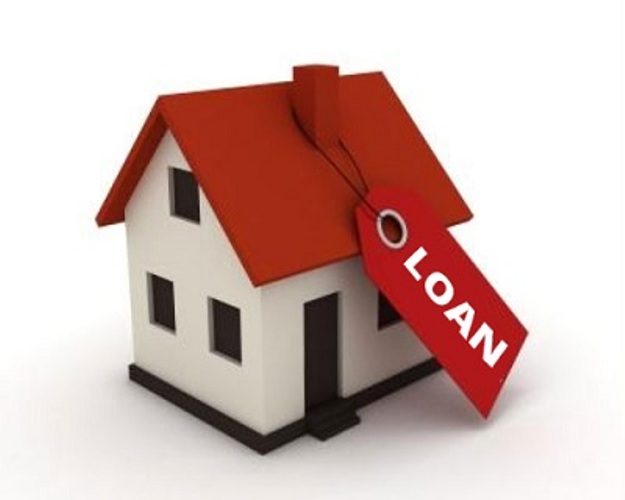Refinancing a mortgage can be a smart financial move for homeowners looking to improve their financial situation or take advantage of lower interest rates.
By refinancing, you can potentially lower your monthly payments, reduce your interest rate, access equity, or shorten the loan term.
In this article, we will guide you through the process of refinancing a mortgage, highlighting the benefits, types of refinancing, costs, and important factors to consider.
Understanding Mortgage Refinancing
Mortgage refinancing is the process of replacing your existing mortgage loan with a new one, often with more favorable terms. It involves paying off your current loan and obtaining a new loan from a different lender. The new loan pays off the remaining balance on your old loan, and you start making payments on the new loan.
Why Refinance a Mortgage?
There are several reasons why homeowners choose to refinance their mortgage. Some of the common motivations include:
- Lowering monthly payments: Refinancing allows you to secure a new loan with lower monthly payments, freeing up your cash flow for other expenses or savings.
- Reducing interest rates: If interest rates have dropped since you obtained your original mortgage, refinancing can help you secure a new loan with a lower interest rate, potentially saving you thousands of dollars over the loan term.
- Shortening the loan term: Refinancing to a shorter loan term, such as from a 30-year mortgage to a 15-year mortgage, can help you build equity faster and pay off your loan sooner.
- Accessing equity: By refinancing with a cash-out option, you can tap into the equity you have built in your home and use the funds for home improvements, debt consolidation, or other financial goals.
Factors to Consider Before Refinancing
Before deciding to refinance your mortgage, it’s important to consider a few key factors:
- Current interest rates: Are interest rates lower than when you obtained your original loan? Lower rates make refinancing more attractive.
- Loan terms and duration: Evaluate whether you want to extend or shorten the loan term, based on your financial goals and circumstances.
- Credit score and financial stability: Lenders consider your credit score, income stability, and overall financial health when assessing your eligibility for refinancing and determining the interest rate.
- Existing mortgage terms: Review your current mortgage terms, such as prepayment penalties, adjustable rates, or balloon payments, to understand any potential costs or limitations.
- Future plans and goals: Consider how long you plan to stay in your home and your long-term financial goals to determine if refinancing aligns with your plans.
Types of Mortgage Refinancing
Refinancing options can vary depending on your goals and financial situation. The three main types of mortgage refinancing are:
1. Rate-and-Term Refinancing
Rate-and-term refinancing is the most common type of refinancing, where homeowners seek to secure a new loan with better terms, such as lower interest rates or a different loan duration. This type of refinancing does not involve accessing equity or receiving cash back.
2. Cash-Out Refinancing
Cash-out refinancing allows homeowners to borrow against the equity they have built in their home. By refinancing for more than the current loan balance, homeowners can receive the difference in cash, which can be used for various purposes, such as home improvements, debt consolidation, or investments.
3. Streamline Refinancing
Streamline refinancing is available for homeowners with specific types of loans, such as FHA or VA loans. It aims to simplify the refinancing process by reducing the documentation and requirements, making it quicker and more straightforward.
Benefits of Refinancing a Mortgage
Refinancing a mortgage can provide several benefits to homeowners. Here are some of the key advantages:
Lowering monthly payments
Refinancing allows you to secure a new loan with lower monthly payments, which can ease your financial burden and provide more room in your budget for other expenses or savings. By obtaining a lower interest rate or extending the loan term, you can achieve more manageable monthly payments.
Reducing interest rates
If interest rates have decreased since you obtained your original mortgage, refinancing can be an excellent opportunity to secure a new loan with a lower interest rate. Even a slight reduction in the interest rate can lead to significant savings over the life of the loan, allowing you to pay off your mortgage faster or redirect the saved funds elsewhere.
Shortening the loan term
Refinancing to a shorter loan term, such as switching from a 30-year mortgage to a 15-year mortgage, can help you build equity faster and become mortgage-free sooner. While the monthly payments may be higher, you will save considerably on interest payments and own your home outright in less time.
Accessing equity
With cash-out refinancing, you can tap into the equity you have accumulated in your home. This can provide you with a lump sum of cash that can be used for home improvements, paying off high-interest debts, funding education, or pursuing other financial goals. However, it’s important to use this option responsibly and avoid overextending yourself financially.
The Refinancing Process
Refinancing a mortgage involves several steps that homeowners should follow to ensure a smooth and successful process.
1. Assessing your financial situation
Before applying for refinancing, it’s crucial to evaluate your current financial situation. Determine your goals, review your credit score, calculate your debt-to-income ratio, and understand your overall financial stability. This will help you determine if refinancing is the right decision and if you’re likely to qualify for better terms.
2. Researching lenders and rates
Take the time to research different lenders and compare their rates, fees, and customer reviews. Obtain quotes from multiple lenders to find the best possible terms for your refinancing needs. Additionally, consider working with a mortgage broker who can help you navigate the market and find competitive offers.
3. Gathering necessary documents
Prepare the necessary documents, such as proof of income, tax returns, bank statements, and documentation related to your current mortgage. Lenders will require these documents to assess your eligibility and determine the loan terms.
4. Applying for refinancing
Once you’ve selected a lender, submit your refinancing application. Be prepared to provide the required documents, respond to any additional requests from the lender, and promptly provide any necessary information throughout the application process.
5. Closing the new loan
If your refinancing application is approved, you’ll move forward to the closing stage. During this process, you’ll review and sign the loan documents, pay any closing costs, and officially close your old loan while starting the repayment of the new loan.
Costs and Fees Associated with Mortgage Refinancing
Refinancing a mortgage comes with various costs and fees that homeowners should be aware of. These expenses may include:
1. Application fees
Lenders may charge an application fee to cover the costs associated with processing your refinancing application. This fee can vary from lender to lender.
2. Origination fees
Origination fees cover the lender’s administrative costs for underwriting and processing your loan. These fees are typically a percentage of the loan amount.
3. Appraisal fees
Lenders often require a home appraisal to determine the current value of your property. The appraisal fee covers the cost of hiring a professional appraiser.
4. Closing costs
Closing costs include various fees and expenses related to the closing of the loan. These costs can include title search fees, attorney fees, recording fees, and other administrative charges. It’s important to review the closing costs in detail before proceeding with the refinancing process.
Factors to Consider Before Refinancing
Before committing to refinancing, consider the following factors to ensure it’s the right decision for you:
1. Current interest rates
Monitor the prevailing interest rates to determine if they have significantly decreased since you obtained your original mortgage. A substantial reduction in interest rates makes refinancing more appealing.
2. Loan terms and duration
Evaluate whether you want to extend or shorten the loan term. Extending the loan term can lower monthly payments, but you’ll pay more interest over time. Conversely, shortening the loan term can lead to higher monthly payments but allow you to save on interest payments.
3. Credit score and financial stability
Lenders assess your credit score and financial stability when determining your eligibility for refinancing and the interest rate you qualify for. Ensure your credit score is in good standing, pay off outstanding debts, and improve your overall financial stability before applying for refinancing.
4. Existing mortgage terms
Review the terms of your current mortgage, such as adjustable rates, prepayment penalties, or balloon payments. Understand any potential costs or limitations associated with your existing loan before deciding to refinance.
5. Future plans and goals
Consider your long-term plans and goals. If you plan to move or sell your home in the near future, refinancing may not be the most beneficial option. On the other hand, if you plan to stay in your home for a more extended period, refinancing can provide substantial savings over time
Tips for a Successful Mortgage Refinancing
To maximize the benefits of refinancing and ensure a successful process, consider the following tips:
1. Improve credit score
Take steps to improve your credit score before applying for refinancing. Pay off debts, make timely payments, and minimize new credit inquiries. A higher credit score can help you qualify for better interest rates and loan terms.
2. Shop around for the best rates
Don’t settle for the first offer you receive. Shop around and obtain quotes from multiple lenders to compare rates, terms, and fees. This allows you to find the most competitive offer that aligns with your financial goals.
3. Consider closing costs and fees
In addition to the interest rate, take into account the closing costs and fees associated with refinancing. Calculate the breakeven point to determine how long it will take to recoup the costs and start saving money through refinancing.
4. Prepare necessary documents in advance
Gather all the required documents in advance to expedite the application process. This includes proof of income, tax returns, bank statements, and documentation related to your current mortgage. Being prepared will help streamline the refinancing process.
Conclusion on Refinancing a Mortgage Loan
Refinancing a mortgage can be a beneficial financial strategy for homeowners looking to improve their financial situation, reduce interest rates, access equity, or shorten their loan term. By understanding the process, types of refinancing, associated costs, and important factors to consider, you can make an informed decision and navigate the refinancing journey successfully.
Frequently Asked Questions – Refinancing a Mortgage Loan
Q: Can I refinance my mortgage if I have bad credit?
A: It may be more challenging to refinance with bad credit, but it’s not impossible. Explore options with different lenders and consider working on improving your credit score before applying.
Q: How long does the refinancing process usually take?
A: The refinancing process typically takes between 30 and 45 days. However, it can vary depending on various factors, such as the lender’s efficiency, complexity of the application, and document availability.
Q: Can I refinance if my home’s value has decreased?
A: If your home’s value has decreased, it can affect your eligibility for refinancing, especially if you want to access equity. Speak with lenders to explore options based on your specific circumstances.
Q: What happens to my old mortgage after refinancing?
A: When you refinance, your new loan pays off the remaining balance on your old mortgage. You will start making payments on the new loan, and your old mortgage will be closed.
Q: Can I refinance multiple times?
A: Yes, it is possible to refinance multiple times. However, it’s important to carefully evaluate the costs and benefits of each refinancing opportunity to ensure it aligns with your financial goals.

